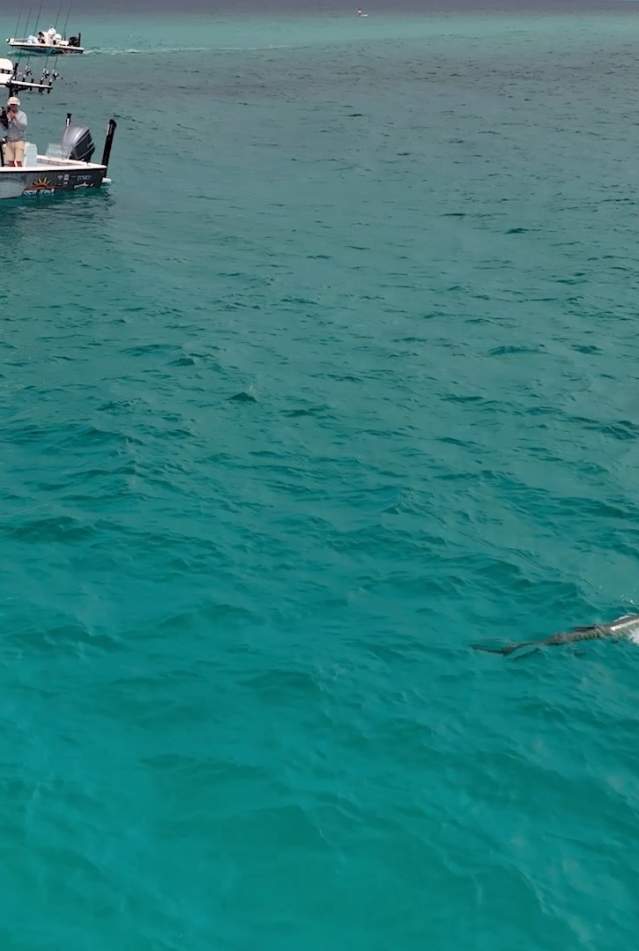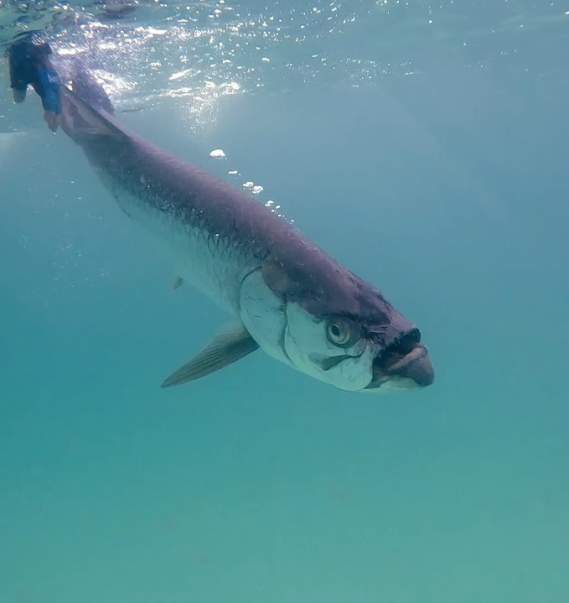Episode Two
In the classic battle between angler and fish, a small hook at the end of a line is the final connection between two worthy adversaries. With hooks, it’s all in the details – and selecting the proper one can make or break a day on the water chasing tarpon.
It’s mid-June and Capt. Justin Leake and Meredith McCord are laser-focused on the annual tarpon migration. That’s when hundreds of tarpon – also known as “silver kings” – make their way westward along Panama City Beach’s coastline.
“If we made a list of everything we would want in a gamefish, the tarpon checks every box,” says Justin. “And I’ve gotten really good at losing tarpon on every hook ever made!”
Tarpon don’t have predictable fight patterns, but one thing is for sure: big hooks and heavy leaders are not options in the Gulf of Mexico’s crystal-clear water. Some of these fish are 50 years old and have just about seen it all, so it pays to be stealthy. Justin positions the boat a minimum of 300 yards away from the school.
“Just because the fish don’t swim away doesn’t mean they’re not spooked,” says Capt. Leake. “You have to respect the fish’s intelligence.”
“And don’t cast to the first fish,” adds Meredith. “If that fish decides that he doesn’t like the bait, he will peel off and everybody else will follow.”
When the pair spots a school of tarpon rolling the surface, baits zip through the air as Justin and Meredith eagerly anticipate a hookup and an epic aerial show by one of nature’s most beautiful and acrobatic gamefish. But will their hooks pass the test?
Also, we get a taste of Bavarian charm at “Oktoberfest,” one of Panama City Beach’s most popular annual events.


